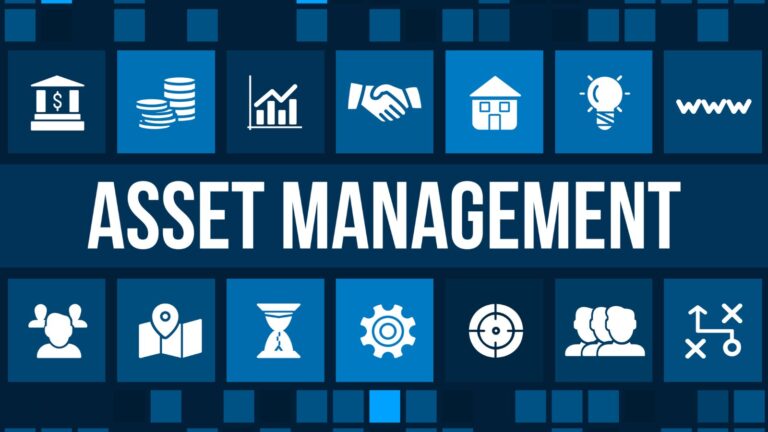Strategic Asset Management is a recognised and standardised mode of managing, operating and maintaining assets for the long term. To ensure each asset is managed appropriately, many asset managers adopt a framework first to understand and visualise assets. This allows them to gain futuristic data as far as ten to twenty years ahead. In this sense, a strategic asset management plan provides a comprehensive overview of financial budgets and other factors that affect asset management in the long term, helping managers to make smart decisions. In other words, asset managers can rely on data-driven information to improve asset investment planning and management across their operations. This blog will provide a detailed overview of strategic asset management.
What Exactly is a Strategic Asset Management Framework or Plan?

Asset managers need to constantly balance the community’s changing needs and the limited budget available. In addition to this, as technology progresses, so do the expectation of the public, who want to be assured that relevant mechanisms are in place to meet safety and quality standards. This indicates that one cannot manage assets based purely on historical data. Hence, strategic asset management frameworks look into the future. An ideal framework, therefore, needs to optimise the capital investment plan, offer feasible funding strategies, help managers make data-driven decisions, manage risks and maintain industry standards.
Before making an asset management framework, there are a few things an asset manager needs to do. First, the asset-centric company should first review its present organisational structure. It does this by having a detailed list of their assets, with information on where they are located and the status of their health and making a self-assessment. The central aim of this stage is to identify which assets are serving the organisation’s needs. Hence, companies need to identify the most important and unnecessary assets in this preliminary stage. At this phase, asset managers also identify and formulate their policies and goals.
Even after identifying which assets are most important, there needs to be prioritisation based on the policies and goals of the company. This is because, despite being a necessary asset, it may not be used less often, requiring only short-term rental. Hence listing out the assets in order of their frequency of use is a great way to project financial costs accurately. After understanding which assets are most important in a specific order, a strategic management plan can be structured. While the features of strategic asset management can differ from company to company, six factors must be present. This includes acquisitions, operations, maintenance, disposal, funding, risk assessment, and management.
Acquisitions – First, managers must consider how many assets should be purchased or replaced. This should include financial details such as the total cost and the method by which how it will be gained.
- Asset operations – Second, managers must focus on the existing assets and study their functions to help them understand the asset’s role, safety, and performance. Any operational and training costs will need to be factored in.
- Asset Maintenance – At this part of the framework, the strategy should detail the level of maintenance each asset requires and note the timelines of when maintenance will be scheduled. This would require projected costs of maintenance to be recorded.
- Asset Disposal – Assets requiring disposal need to be specified in the plan. Note that, in general, all assets should have a disposal plan. This includes listing the reasons why it is disposed of and how such disposals may affect the tax. The method of disposal and the amount it will need should also be mentioned.
- Funding – Requires a well-rounded record of finances required for all aspects of assets. This includes holding, maintaining and disposing of them. Each asset would therefore have details of how much funds are required for its functioning and when it is needed.
- Risk Management – Any potential risks, their rate of occurrence and a mitigation plan for each scenario is necessary. Listing out assets based on their criticality helps ensure that losses are at a minimum.
Put Your Strategic Asset Management Plan into Action With a Software
While forming a plan is one thing, executing it in action is another. The best way to execute the framework or plan is by investing in a holistic software solution that can automate this process. This way, not only can asset managers know the accurate financial estimates that each repair will need, but other aspects related to real-time monitoring, scheduling maintenance and related steps can be automated. As a bonus, human staff no longer need to do mundane and repetitive tasks and can be responsible for more serious tasks. In effect, software used to implement the strategic action plan can maximise labour utilisation within the asset-centric organisation.
Why Adopt a Strategic Asset Management Plan?

Financial feasibility is not the only benefit of a strategic asset management plan. There are much more. Here are some of the leading advantages.
Boost Productivity
Forming a detailed strategy allows asset managers to pinpoint bottlenecks and find what factors are slowing down the production process. Hence, each time an anomaly is detected in advance, the system can pinpoint exactly what and where the problem is, ensuring no time is wasted on detecting the root cause. This leads to all problems being rectified as soon as possible, thus eliminating downtimes. Since productivity remains high, asset managers can ensure a smooth workflow.
Meet The Demands of the Public
Asset managers in charge of utility industries such as water, wastewater and roading, for instance, have an increased responsibility to ensure the public is safe. This could be safe in terms of consuming secure drinking water and guaranteeing everyone has equal access. Good software that executes the framework looks at ensuring assets meet quality requirements. Hence, each time an asset presents an anomaly, the asset manager ensures it does not affect the public’s safety by taking relevant measures.
Analyse and Reflect
Softwares focusing on implementing a strategic asset management plan allow stakeholders and managers to reflect on and monitor the framework’s effectiveness. With a click of a button, asset managers can receive detailed insights into how each asset is performing, the financial viability of the company and any negative gaps that remain despite the framework. This way, asset managers can review, make changes and readapt to new protocols. This allows corporates to proactively address problems, leading to lesser consequences in the long term.
Meet Individual Compliance Standards
Each asset has different compliance standards depending on the industry they are in. Moreover, these standards can change in different periods depending on newer risks, such as climate change. A sound software system sees such changes in advance, allowing asset managers to prepare and transition to newer protocols in the future. Hence, asset managers can flexibly meet individual compliance standards instead of succumbing to taxes or spending drastic amounts of money on implementing a completely new system with one solution.
Fix Anomalies According to Your Resources
While a framework requires asset managers to account for asset anomalies, what happens when there is more than one threat? For instance, if two assets demonstrate that they require maintenance instantly, how can an asset manager decide which one needs action if there are limited finances? A good software solution will consider individual factors of the specific asset company. Based on the limited financial budget allocated for that period, in addition to considering how many people would possibly be affected by the breakdown of that asset, the software can instruct which asset requires prioritisation.
Strategic Asset Management Frameworks Can Be Made with More Reliability Than Ever Before

Traditionally, the accuracy of a strategic asset management framework depended on data analysts. Even the most talented analyst could not provide the most reliable information. Moreover, no analysts could provide futuristic insights as far ahead as ten years. Today, however, with technology, asset managers can rely on exclusive asset management software solutions. Not only can they accurately predict breakdowns, but they can significantly help asset managers to effectively carry out maintenance, eliminate risks, reduce waste and significantly reduce finances.







